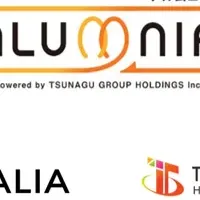
Xeltis Unveils Promising Results for Xabg: A Potential Game Changer in Coronary Bypass Surgery
Exciting Advances in Cardiovascular Care: Xeltis' Xabg Shows Promise
Xeltis, a leading innovator in the field of medical technology, is making waves in the healthcare sector with its transformative product, the Xabg. This coronary artery bypass conduit (CABG) has recently demonstrated encouraging preliminary data in clinical trials across the EU, highlighting its potential to revolutionize cardiac surgery. In this article, we delve into the significant findings from these trials and consider what this could mean for the future of health care in cardiovascular treatments.
Unpacking the Data: A Promising Start
The preliminary results from the ongoing clinical trial of Xabg indicate that it performs well in ensuring blood flow and maintaining safety among patients suffering from multi-vessel atherosclerotic coronary artery disease. What sets this conduit apart is its biorestorative properties, allowing it to gradually be replaced by the body’s living tissue—a groundbreaking approach leveraging Xeltis’ proprietary Endogenous Tissue Restoration (ETR) platform, rooted in Nobel Prize-winning polymer technology.
In a prior trial, patients benefitted from sustained blood flow for an unprecedented 24 months after their surgery—marking a milestone in artificial bypass conduits. This remarkable feat underlines the significant advancements made with Xabg, showcasing not only its effectiveness but also the innovative capabilities inherent in Xeltis' technologies.
The Current Landscape of CABG Surgery
Coronary artery bypass grafting is essential for treating severe coronary artery disease, which remains the leading cause of death worldwide. Unfortunately, current methods typically involve using vein grafts harvested from the patient's body, a process fraught with complications and chronic pain. Furthermore, it’s estimated that many patients undergo suboptimal procedures, as as much as 80% of CABG surgeries depend on these less effective veins.
The North American CABG market alone is predicted to exceed $20 billion by 2035, driven largely by increasing instances of cardiovascular disease and the ensuing demand for safer, more effective treatments. This sets the stage for Xabg's entry into the market, fulfilling a critical need for reliable vascular grafts that produce positive long-term outcomes.
Pioneering Innovation: The Role of Xabg
The implications of Xabg are far-reaching. By potentially eliminating the requirement for vein harvesting, it can not only simplify surgical processes but also improve the overall experience and recovery for patients. With the absence of minor but painful harvesting, the surgical focus can shift towards optimizing patient results and outcomes.
Dr. Isaac George, Surgical Director at Columbia University Medical Center, notes that Xeltis is redefining the paradigm of vascular access technologies. His enthusiasm reflects the broader excitement in the medical community, as these positive data points suggest a strong potential for Xabg to lower reoperation rates and ultimately lessen healthcare costs linked to coronary artery disease.
Looking Forward: Continued Developments
The current trial involving a single-arm study is exploring the safety and performance of Xabg among patients scheduled for elective CABG procedures in various European locations. As Xeltis continues its momentum with Xabg, it is also advancing its other product, aXess, aimed specifically at facilitating hemodialysis access—a testament to its commitment to tackling major cardiovascular challenges with innovative solutions.
As we hold our breath for further results from Xabg’s clinical trials, it's clear that Xeltis has positioned itself at the forefront of cardiac healthcare advancements. The hopeful outcomes for patients suffering from coronary artery diseases have the potential to redefine the landscape of cardiac interventions, heralding a new era of safety and efficacy in surgeries that impact millions globally.
Topics Health)










【About Using Articles】
You can freely use the title and article content by linking to the page where the article is posted.
※ Images cannot be used.
【About Links】
Links are free to use.